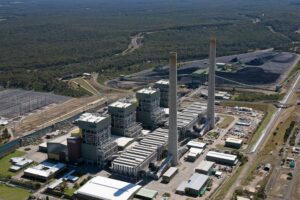
Now everyone is firmly back into full soap opera mode in Canberra, the more immediate and far reaching power crisis has been pushed off the front pages. Don’t worry though, it isn’t going away any time soon.
The blackouts which affected almost 100,000 Victorians over the Australia Day weekend have been blamed by the Coalition on the failings of the Andrews government energy supply policy, whether allowing the closure of Hazelwood or encouraging the rapid build-out of renewables generation across the state.
Fortunately for the government, the Australian Energy Market Operator came to its defence and confirmed that there was indeed enough electricity supply to go around. Problem was, they just couldn’t get it to the customers.
Seriously?
Now if the affected customers lived in some far flung parts of the state, this might be understandable. But those areas affected most were across the south east suburbs of Melbourne, where to my knowledge there’s been a reasonable sized settlement for the past 75 years. So why did the lights go out for so many homes?
If we are to believe the energy distribution companies, it was a combination of factors. We are informed that high temperatures caused fuses to blow.
There is little further detail on whether the companies were surprised by the occurrence of high temperatures in late January or the fact that fuses blow in such conditions.
Either way, the state’s electricity network is only 100 years old, so it’s perhaps too early to make a definitive judgement. Alternatively poor Hugo Armstrong from Ausnet blamed the fact that “people put in air-conditioners they didn’t tell us about”.
I confess to having forgotten to write and inform them when I bought that new Daikin, so I too apologise to my neighbours for any inconvenience caused.
The real reason the network was unable to deliver power is that the energy companies, together with the Essential Services Commission (ESC) which regulates the Victorian electricity industry, have failed completely to change their business model in the face of global changes in the electricity industry.
As more customers generate a larger portion of their own energy, there is naturally less revenue for the distribution companies.
In order to maintain their regulatory return, they therefore have two choices. Reduce costs and become more efficient in their operations, or increase electricity tariffs for everyone else. No prizes for guessing which path they have pursued.
So what of the regulator? Surely it has pulled up the network companies and insisted they look at new and more cost efficient ways to run the network?
Sadly not. Having established the market leading Victorian Energy Efficiency Target Scheme in 2009 under the Brumby Labour government, the ESC has done nothing to keep up with technology developments.
The scheme was designed to promote new energy saving technologies by requiring energy retailers to purchase a pre-set level of Energy Efficiency Certificates based on the size of their customer base. The only way to generate these certificates was to install energy saving technologies in customer homes.
Smart idea, if only the scheme had evolved with the times to recognise new, disruptive technologies which may be more effective in delivering ongoing efficiency benefits.
The retailers know that there is a whole lot more they could be doing but, unfortunately, the ESC continues to resist inclusion of any new technologies beyond the original LEDs, showerheads and standby power controllers.
As a result, the scheme is going nowhere. There has been no encouragement from the regulator for distribution networks to adopt the latest energy saving technologies.
These include voltage management, which can reduce domestic electricity consumption by over 10%, or peak power demand reduction equipment, which in Queensland lowers electricity demand charges for small businesses by over 20%.
So this is where the Victorian government can make a difference. Without incentives, we will continue in this spiral of higher costs and lower reliability. Kick the ESC to embrace new energy efficiency technology and we have a plausible way forward.
Everyone’s grandmother will tell you that the best way to save money is not to spend it. Using less energy is the cheapest way to ensure the lights don’t go out.
Oh, and don’t forget to call your power company about that new aircon that didn’t work when you should have been watching the tennis.
Richard McIndoe is a former head of EnergyAustralia and is now executive chairman of Edge Electrons.









